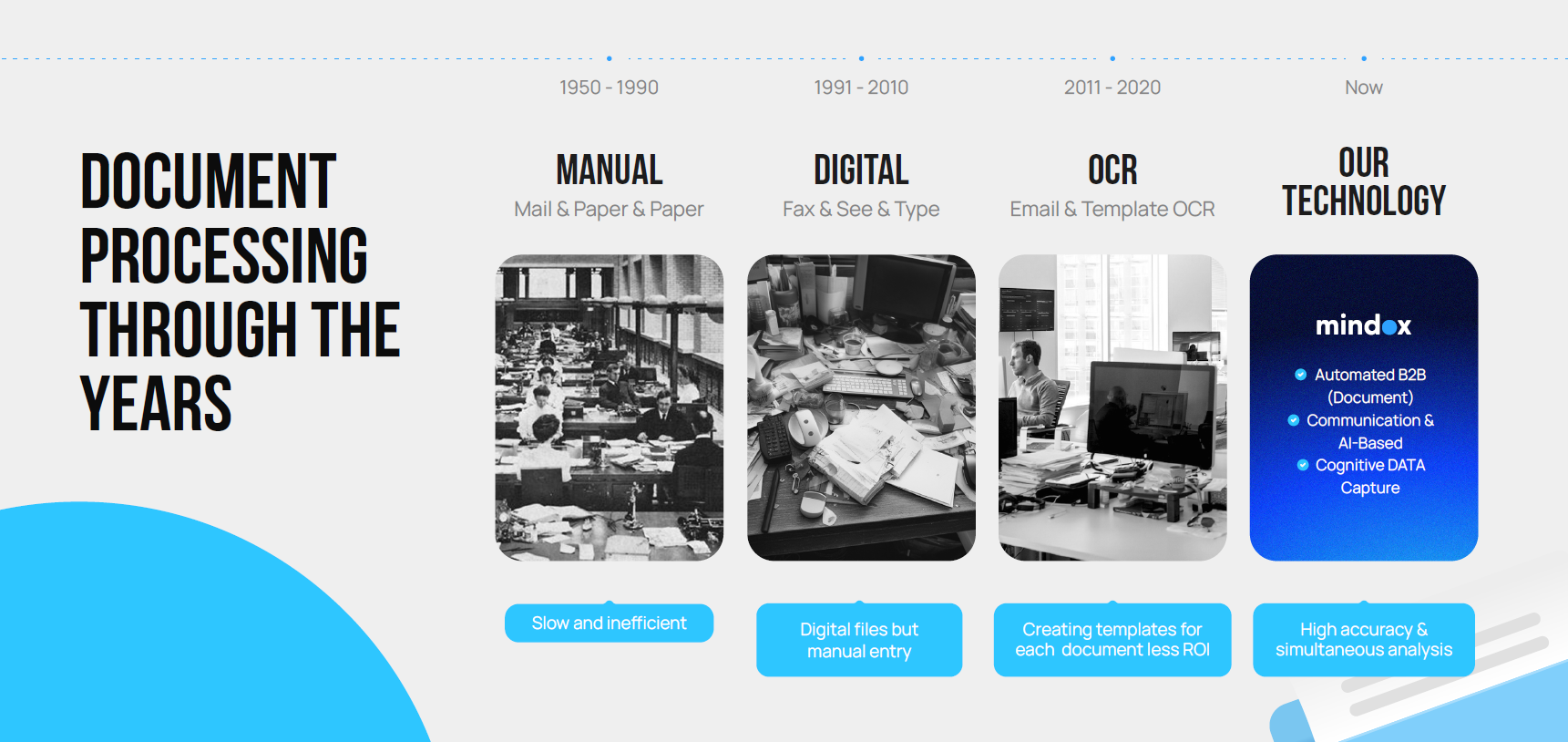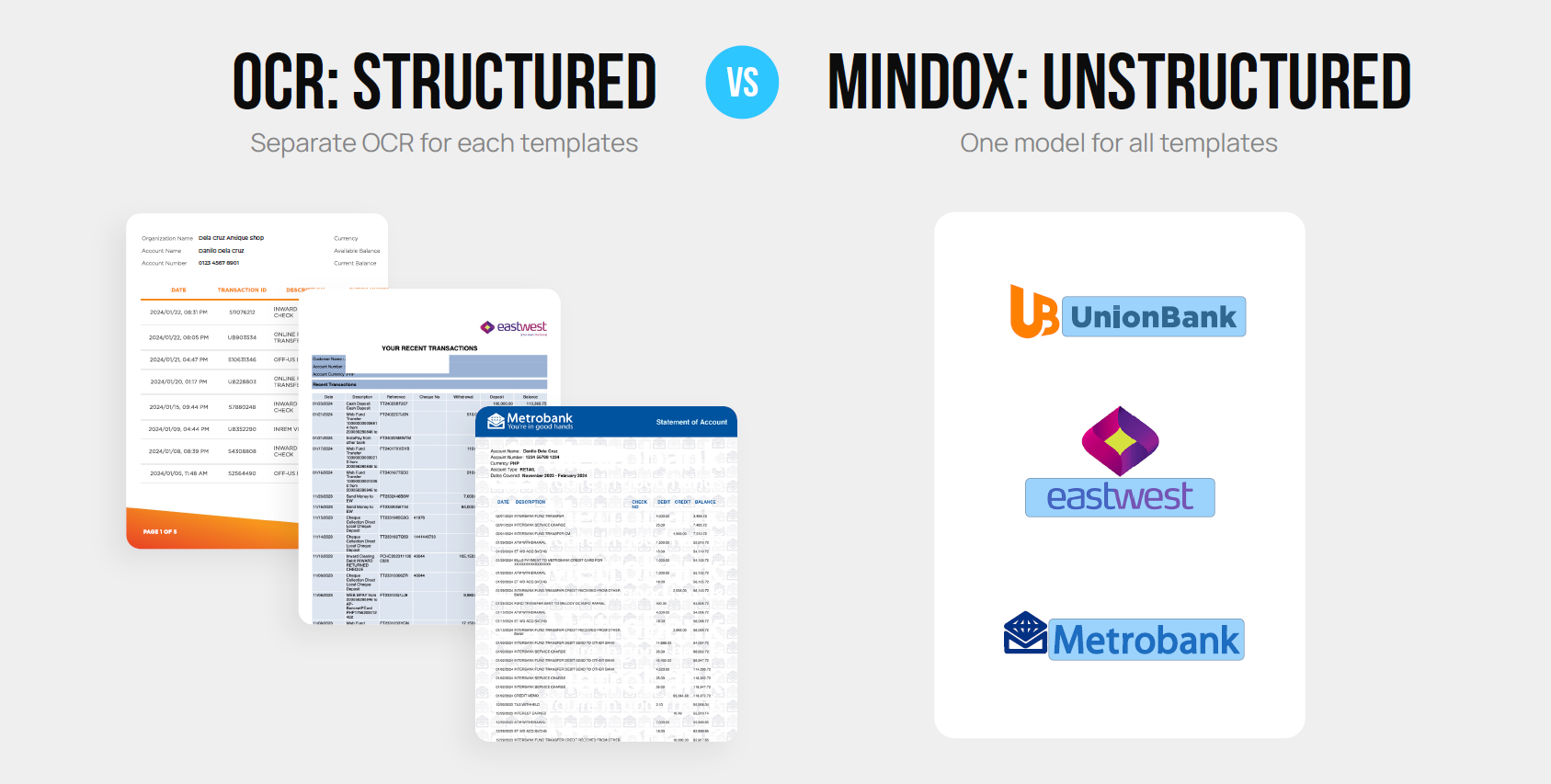
Still relying on manual document handling for processing loan applications, invoices, or employee records? You’re not alone. While OCR has helped automate text recognition for years, it often falls short in real-world scenarios. This post explores what OCR is, why it’s useful, and how Intelligent Document Processing (IDP) takes it a step further—especially for fast-growing businesses in the Philippines.
What is OCR?
Optical Character Recognition (OCR) is a technology that converts different types of documents—such as scanned paper records, PDFs, or digital camera captures—into editable and searchable text data.
Common Uses of OCR:
- Automating data entry: Extracting text from documents to eliminate manual input
- Digitizing records: Converting physical archives into searchable digital formats
- Improving accessibility: Enabling text-to-speech for visually impaired users
The Benefits of OCR
OCR empowers users to work with documents as if they were originally digital. By automating data extraction and making documents digitally accessible, OCR:
- Reduces manual workloads
- Speeds up retrieval and search
- Improves accuracy in basic workflows

OCR limitations:
While OCR is useful, it comes with limitations that can hinder critical business operations:
- Accuracy Challenges:
- Blurry, low-resolution scans
- Complex layouts (tables, overlapping elements)
- Unconventional or handwritten fonts
- Limited Context Awareness:OCR only identifies characters; it doesn’t understand the meaning of the text.
- Format & Language Barriers:Traditional OCR systems may not support various document types or languages.
- Manual Verification Required:Often, humans still need to double-check extracted information.
A Case in Point: Invoices
A prime example of OCR limitations is processing invoices. Since invoices from different institutions often have unique formats (layout, fonts, data placement), a single, generic OCR template wouldn’t be effective. To achieve optimal accuracy, custom templates need to be created for each type of invoice to guide the OCR process and improve data extraction results.

Why IDP Is the Future of Document Automation
IDP builds on OCR by adding Artificial Intelligence (AI), Natural Language Processing (NLP), and machine learning. It doesn't just read—it understands.
Mindox IDP is a leading solution that addresses OCR’s limitations through advanced automation and contextual analysis.
Here’s how Mindox improves on traditional OCR:
- Improved Accuracy & Speed: Handles even low-quality or complex layouts
- Contextual Understanding: NLP helps make sense of text for better classification
- Document Versatility: Supports PDFs, images, handwritten forms, and multiple languages
- Workflow Automation: Goes beyond extraction—automates onboarding, invoicing, loan applications
OCR vs. IDP: What’s the Difference?
Final Thoughts: OCR Was the Start. IDP Is the Future.
OCR opened the door to digitization. But businesses today need more than digitized text—they need context, intelligence, and automation.
Mindox IDP brings all of that into one scalable platform.
👉 Curious if Mindox is right for your team? Book a free consultation to learn more.
Related articles



.avif)
